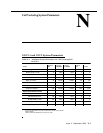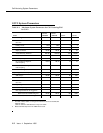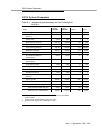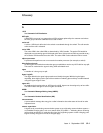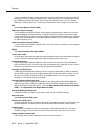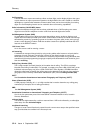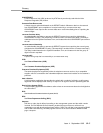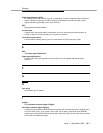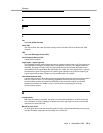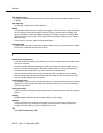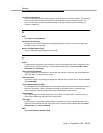
Glossary
GL-6 Issue 4 September 1995
dequeued average queue time
The average time a call waits until it is answered by another split to which the call is also queued.
This time is indicated in the CMS Split Summary report.
dial-ahead digits
The touch tone digits that are entered by the caller or returned by a VRU, but not yet collected by
a
collect digits
vector step. Dial-ahead digits are stored in the call prompting buffer until collected
by a
collect digits
vector step. See also collected digits.
Dialed Number Identification Service (DNIS)
DNIS provides a display to the answering agent of the service or project, or of the number called
(or associated routing number) so that agents grouped in one split/skill can answer appropriately
for many different services. DNIS can also be sent to a host computer or other adjunct device.
direct agent call
A call directed to an adjunct (via ASAI) or by a voice terminal user (via EAS Logical Agent ID) to a
specific agent where the call is treated as an ACD call with zip tone answer, queuing,
after-call-work, and CMS measurement as an ACD call. These calls are queued and delivered
before any normal split/skill ACD calls
Direct Department Calling (DDC)
A hunting algorithm which delivers calls to available agents within a hunt group in a pre-defined
order.
Distributed Communications System (DCS)
A network configuration linking two or more switches in such a way that selected features appear
to operate as if the network were one system/switch.
DIVA
See Data In/Voice Answer (DIVA).
DNIS
See Dialed Number Identification Service (DNIS).
EAD
See Expert Agent Distribution (EAD).
EAS
See Expert Agent Selection (EAS).
End-of-Dialing Indicator
A call prompting symbol, specifically #, which allows the user to enter fewer touch-tone digits than
the maximum specified. The user does this by entering # at the end of the digit string.
Expected Wait Time (EWT)
An estimate of how long a caller will have to wait to be served by a split/skill while in queue
considering the current and past traffic, handling time, and staffing conditions. Time spent in
vector processing before being queued and the time spent ringing an agent with manual
answering operation is not included in the EWT.
Expert Agent Distribution (EAD)
Call distribution method that allows a new call to the hunt group to first look for the most-idle
primary agent. The call only Iooks for the most-idle secondary agent if no primary agents are
available. Therefore, this method allows a call to be distributed to an agent who can best handle
the call in cases where multiple agents (primary and secondary) are available.



